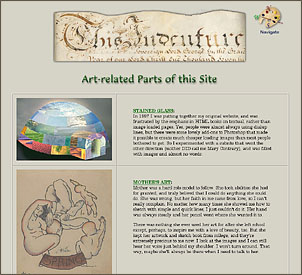Gustav Graef is a distinguished German artist, born in 1821 at Konigsberg,
Prussia. He was a pupil of Professor Hildebrandt and Schadow at Dusseldorf, and made his first success
with subjects derived from the "Nibelung" and other German legends. He left Dusseldorf to study in
Antwerp, Paris, Munich and Italy successively, and while he became a strong and popular portrait painter
he adhered for his subject-pictures mainly to the national legendary lore and fairy-tales.
He has painted also a number of decorative compositions of a historical character, and developed
Biblical and mythological motives. "The Soul of the Water Dragon" is an old folk-tale in Germany.
A malignant witch, to be revenged on a queen who has treated her with disdain, transforms her daughter into
a water dragon. The young prince who is betrothed to the princess swears to restore her. His
good fairy consents to assit him, under condition that he suffer her to
metamorphose him into a raven. He consents. Advised by the fairy how to proceed,
he seeks the stream where his enchanted sweetheart has her lair, and finds her sleeping among
the reeds. As directed by the fairy he pecks out one of the dragon's eyes and then seizes its dorsal
fine with his iron beak, when the hideous, scaly skin comes off and the princess stands forth in all
her beauty. At the same moment, by a spell of the fairy, the wicked witch enters into the skin of the
monster and becomes a terrible land dragon. Next the prince is restored to his human form, arms himself,
goes forth and slays the dragon, and being duly united with the princess all live happily ever after in the
good old style.
Back Forward
Chapter 10 Text
Bertha Verree





![]() Copyright © 2007, Mary S. Van Deusen
Copyright © 2007, Mary S. Van Deusen